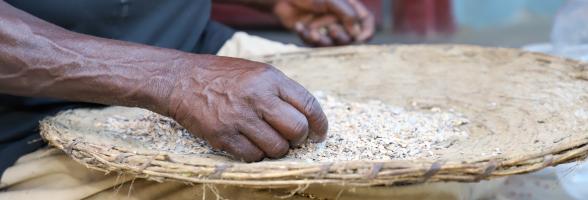CONTEXT
Uganda has seen several crises, from the ongoing violence in its neighbouring countries to health pandemics like COVID-19 and Ebola that have exacerbated the world food crisis.
Up to 73% of refugees and 94% of host populations are employed in agriculture across all refugee camps. In addition to receiving food help, refugees also run small businesses, yet their overall revenue is still inadequate to cover their necessities.
Accordingly, recent research indicated that 91% of refugee families in Uganda are very susceptible economically, with West Nile refugees having the greatest degree of vulnerability (96%) as compared to those in the Southwest (84%).
It was also shown that relief assistance is the primary source of income for around 54% of the refugee families. Since refugees have been able to participate in economic activities to a greater extent over time, this percentage has lately decreased to 37% for the many refugee families that have lived in the nation for longer.
With the scaling down of food assistance by the World Food Program (WFP) due to resource constraints, this has meant that relief assistance is based on prioritization; where the neediest families are the focus of assistance thus the least vulnerable families no longer get food aid under this new arrangement.
As a result, most refugees who are believed to be capable of farming to support their food needs are left out, which leads to a desire for ongoing supplemental help to produce additional food for refugees and host communities to achieve sustainable lives thus informing Oxfam in Uganda’s implementation of the Advancing Women’s Leadership, Empowerment, and Resilience in Uganda’s Refugee Response: Phase II (LEAP II) project
ABOUT THE PROJECT
Leadership, Empowerment, Access, and Protection (LEAP Il) is being implemented in the Refugee Hosting Districts of Yumbe, Terego, and Kyegegwa. The Norwegian Embassy funds this initiative through UN Women and involves a consortium of partners, including Oxfam, Uganda Refugees Disaster Management Council (URDMC), and SEE (Social, Economic, and Environmental) Impact. The project focuses on advancing the well-being of Refugee and Host Community Women and Girls affected by Conflict, Severe Drought, and Forced Displacement.
During its implementation, it will seek to empower crisis-affected populations, particularly women and youth, to have better access to food, income, and resilience to climate shocks.
PROJECT AIM
To ensure that positive coping mechanisms and sustainable economic activities are promoted for refugee and host community women and girls.
TARGET REACH:
- 45660 (direct participants)
- 9132 (Indirect participants)
EXPECTED RESULTS
- Refugee and host community women have increased access to sustainable non-agricultural livelihood opportunities.
- Refugee and host community women have increased participation and benefit in Disaster Risk Reduction/Women’s Resilience Disasters
PARTNERS
- Uganda Refugee Disaster Management Council (URDMC).
- SEE (Social, Economic, and Environmental) IMPACT
FUNDED BY
- Embassy of Norway through UN Women
BUDGET
- $717,197.70
PROJECT DURATION
- 2024-2026
GEOGRAPHICAL COVERAGE
- Yumbe
- Terego
- Kyegegwa

